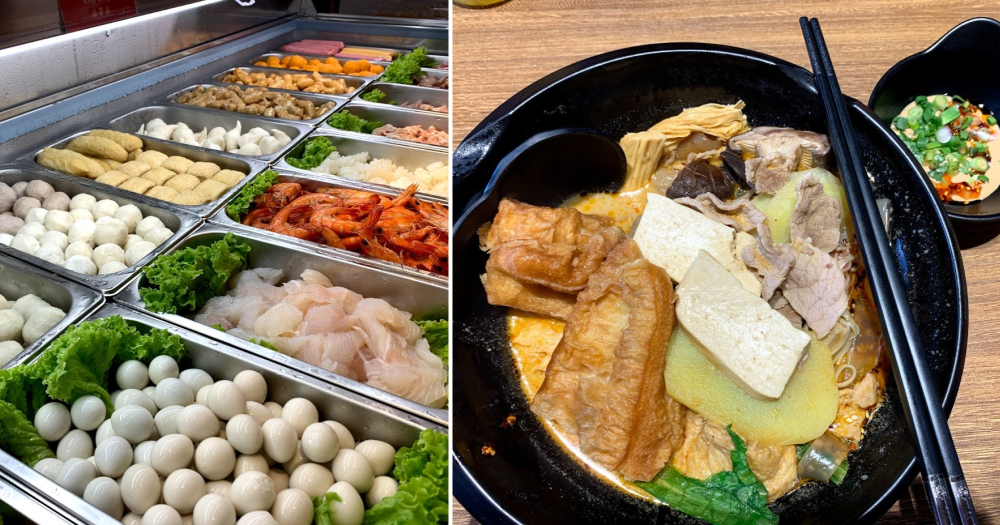[Editor's note on Nov. 27 at 11am: This article previously indicated that the writer's bill was S$31.40 with 1.02kg of ingredients.
Yang Guo Fu has clarified that the weight of the items was actually 670g, and thus the price of the writer's meal should be S$20.65 instead, as the weight of the bowl was not deducted.
Yang Guo Fu says that the error, which did not affect its other outlet at Singpost Centre, has been corrected before the restaurant opened to the public on Nov. 27.]
The craze surrounding mala xiang guo, or mala stir-fry has simmered down somewhat, but its pick-your-own-ingredient-stir-fry format has become commonplace at many hawker centres and foodcourts.
Enter Yang Guo Fu (YGF), a brand that was founded in China in 2003 and grew to a "fiery empire" of over 6,000 branches in countries like Japan, Canada, and Australia.
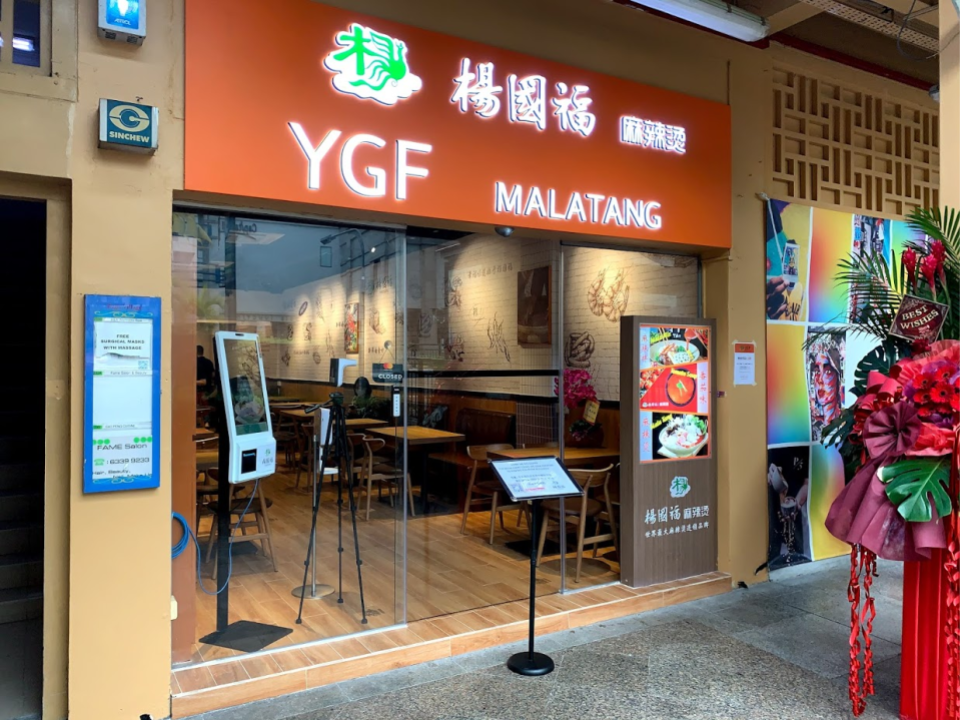 YGF's outlet in Bugis Village, along Victoria Street. Photo by Nigel Chua.
YGF's outlet in Bugis Village, along Victoria Street. Photo by Nigel Chua.
Its signature offering is mala in the form of soup (or broth, as the brand calls it), rather than stir-fry.
While the food is slightly pricy, you will probably find YGF's offerings unique even if you've tried every mala xiang guo and mala hotpot in Singapore.
Pick your own ingredients
A meal at Yang Guo Fu starts with you picking your own ingredients, which are weighed, cooked, and mixed into soup at your preferred spiciness level (the options are "low", "medium", and "extreme" — but more on that later).
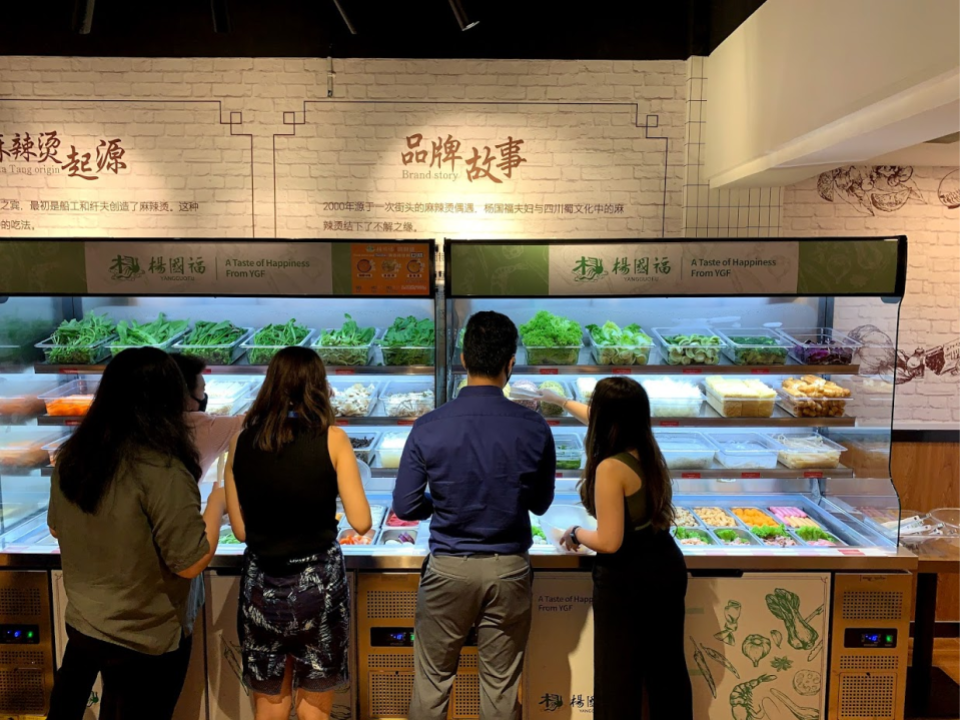 Picking ingredients at YGF. Photo by Nigel Chua.
Picking ingredients at YGF. Photo by Nigel Chua.
As far as I could tell, this is the only similarity between the mala xiang guo that most of us in Singapore might be accustomed to, and what's on offer at Yang Guo Fu.
Two soup options, one dry version
While the wide range of over 60 ingredients (and YGF's quality control) was certainly impressive, the soups are what makes YGF's offering really stand out.
There are three "bases" you can choose at Yang Guo Fu:
1. Spicy Mala Beef Broth
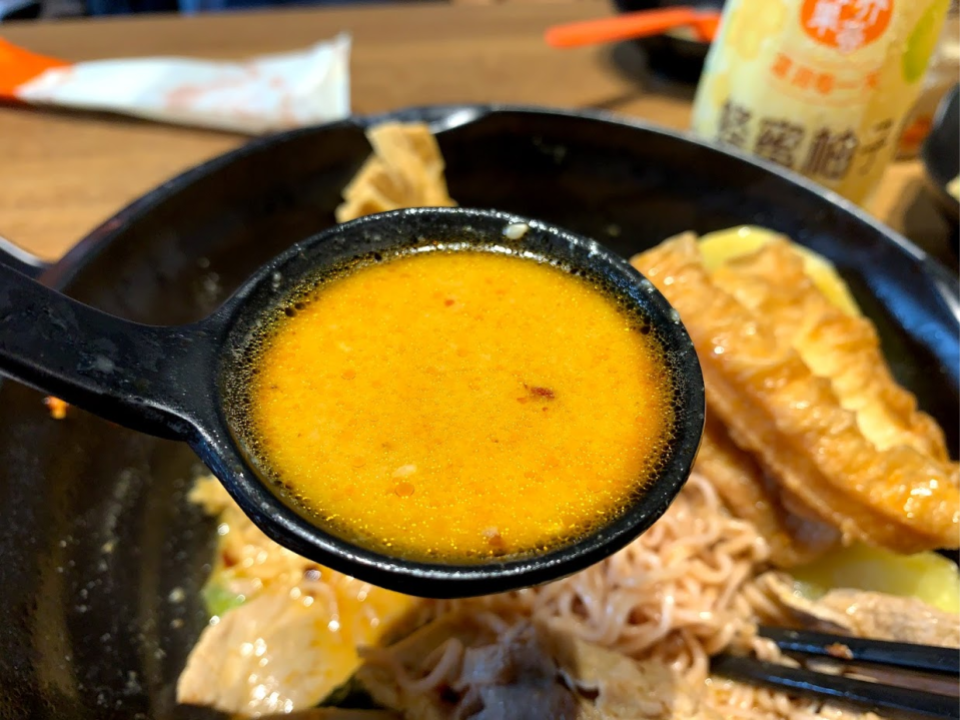 Spicy Mala Beef Broth, a rich, milky stew advertised to be "collagen-rich". Photo by Nigel Chua.
Spicy Mala Beef Broth, a rich, milky stew advertised to be "collagen-rich". Photo by Nigel Chua.
This must be how one man, Yang Guo Fu, made his name into the world's largest mala tang chain (yes, the founder named his chain after himself).
Yang's recipe involves milk and sugar being added into the soup to make for a rich, satisfying broth.
Considering that this was made from beef, the broth was rich without being pungent, and sweet without being cloying.
Neither was it particularly oily or heavy, with a consistency that was nearly as thick as laksa gravy.
My only complaint about the soup is that there could be more of it to go around.
The dish was rather dry about halfway into the meal — though that could be because I kept taking sips of it, or because the ingredients had absorbed the soup.
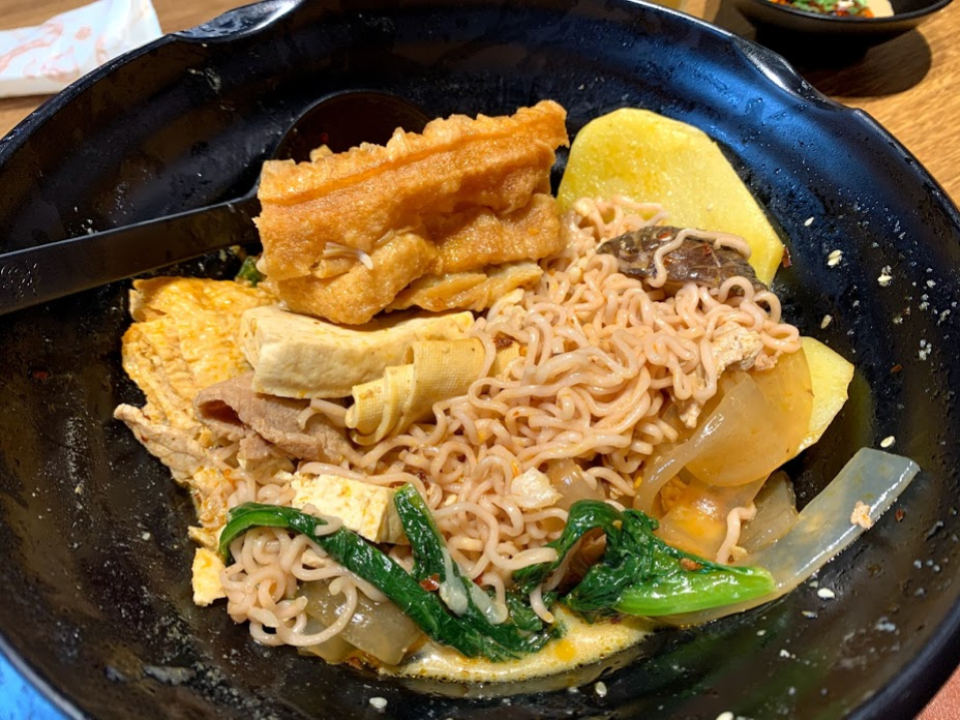 All good soups come to an end. Photo by Nigel Chua.
All good soups come to an end. Photo by Nigel Chua.
In terms of spiciness, I went for the "medium" spiciness level, which turned out to be a lot less spicy than expected.
I'm told that the soup base has been calibrated from what it would be in YGF's China outlets, to be less spicy, and less salty.
As someone with above-average chilli tolerance, I came prepared with a full bottle of water just in case, but ended up not really needing it.
The spice didn't burn my tongue, while the finely-ground sichuan peppercorns (which put the ma in mala) left me with a gentle numbing sensation on my lips.
This means that the spiciest option, "extreme" spicy, would probably be quite manageable for chilli lovers, who can also add chilli or chilli oil to their preferred taste.
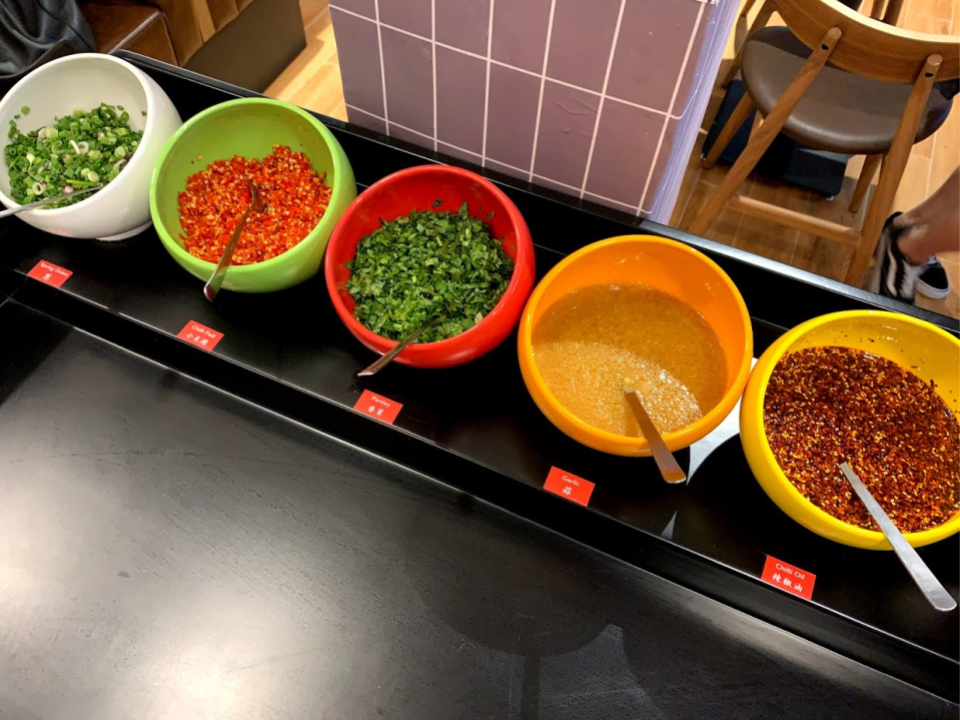 YGF's condiments, which you can add into a sesame sauce base. Photo by Nigel Chua.
YGF's condiments, which you can add into a sesame sauce base. Photo by Nigel Chua.
2. Tomato Broth
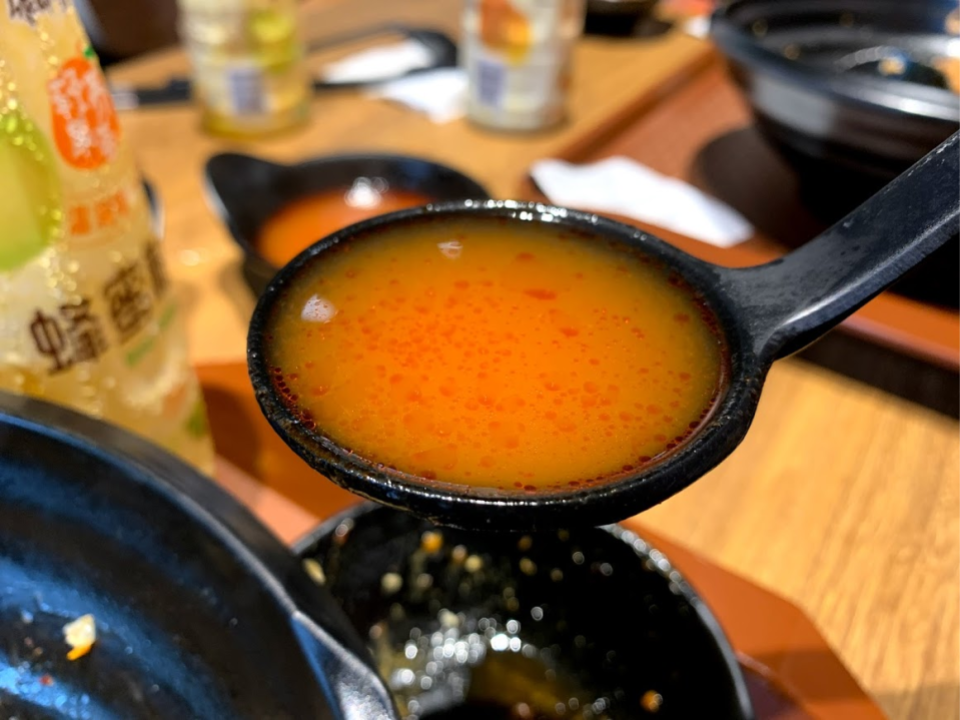 Made without any added salt, YGF's tomato broth is a healthier option that is also vegetarian-friendly. Photo by Nigel Chua.
Made without any added salt, YGF's tomato broth is a healthier option that is also vegetarian-friendly. Photo by Nigel Chua.
The tomato broth, made with tomato (of course) and other vegetables, is YGF's "healthier choice" option, as its made without salt, and is vegetarian.
It had a slight sour tang, and a subtle sweetness that could perhaps be described as deep — more caramel than cotton candy.
Nevertheless, it was roundly overshadowed by the other two spicy options, which were a lot more interesting, and tastier overall.
Still, it does taste good enough to help you convince that one friend who doesn't eat spicy food to maybe come along on your outing.
3. Mala Ban
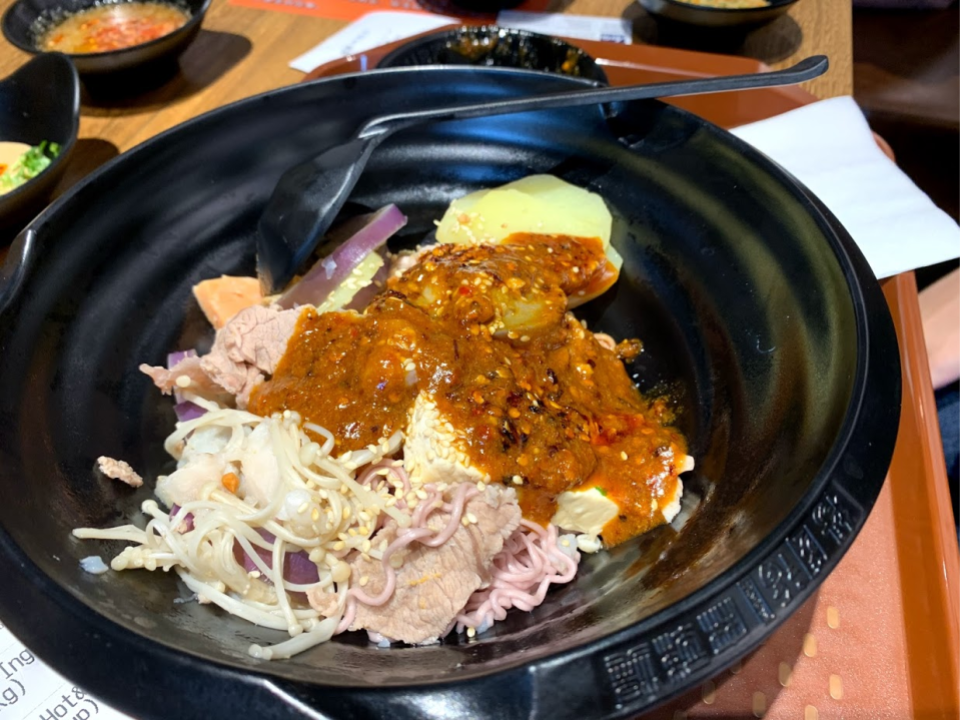 The sauce used for YGF's Mala Ban is made from chillies from the northern provinces of China. Photo by Nigel Chua.
The sauce used for YGF's Mala Ban is made from chillies from the northern provinces of China. Photo by Nigel Chua.
The Mala Ban option involves your choice of ingredients being served with a special spicy sauce.
This doesn't deliver the heady fragrance of mala xiang guo, however, as the ingredients are blanched rather than stir-fried.
This was admittedly disappointing, since the dish ended up feeling a little too healthy and lacking in fragrance overall.
Nonetheless, the sauce was certainly interesting, with sesame providing creaminess and sweetness, which balanced out the spiciness, which apparently comes from various chillies from China's northern provinces.
And no, the ingredients were not simply dumped into a pot to be boiled. Rather, the staff assured me that ingredients are cooked in sequence so as to not end up overcooked.
Putting aside my gripe about this not being a stir-fry dish, I have to admit that all of the ingredients were cooked just right.
Potato slices, for example, retained bite and did not fall apart, while not being crunchy and raw.
Enoki mushrooms remained firm, instead of ending up as mush.
And most importantly, the noodles remained springy.
Wide range of ingredients
There were over 60 items to choose from, ranging from tofu and tofu products, mushrooms, vegetables, different kinds of noodles, seafood, and meat.
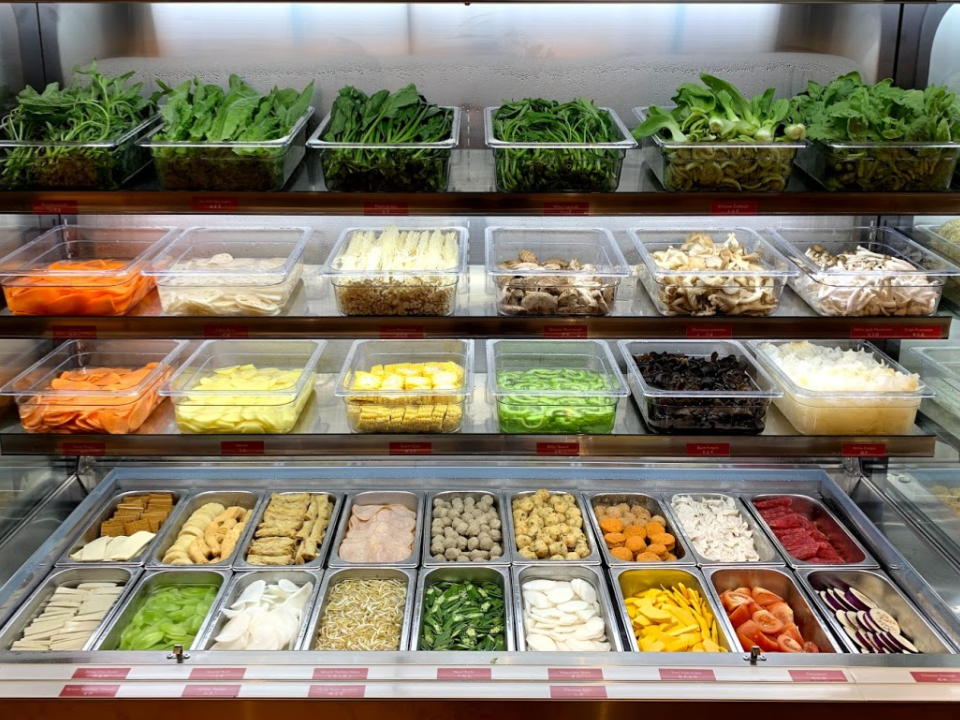 Left fridge. Photo by Nigel Chua.
Left fridge. Photo by Nigel Chua.
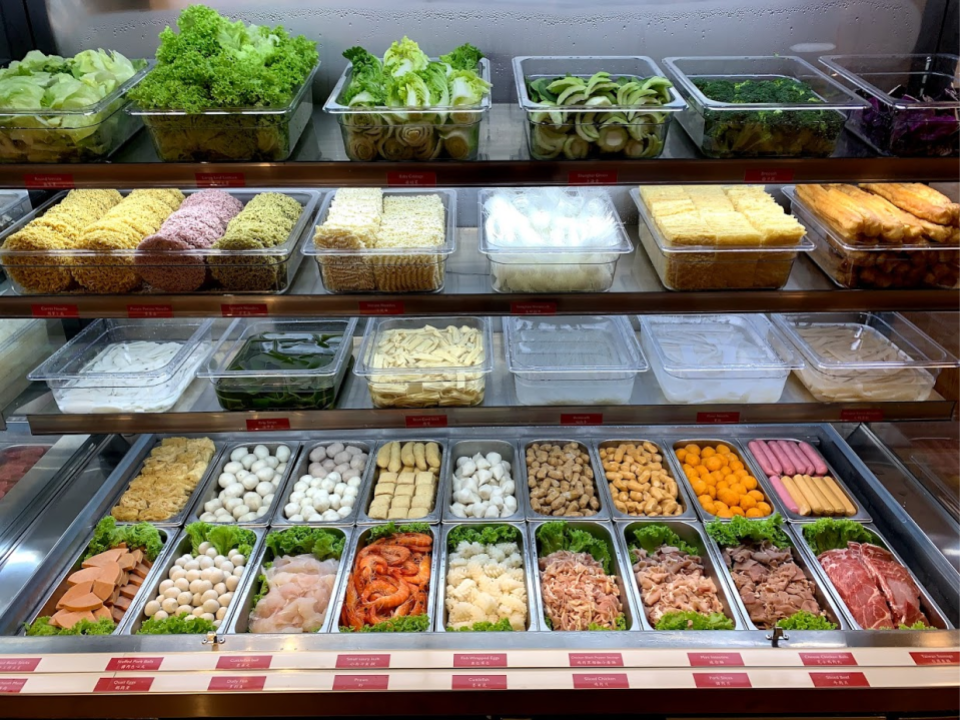 Right fridge. Photo by Nigel Chua.
Right fridge. Photo by Nigel Chua.
As far as I could tell, all of the ingredients were carefully-sourced for quality; the vegetables appeared vibrant, while the seafood items and meats were tender and fresh.
Ingredients worth noting
Here are some items that stood out among the selection.
Youtiao (fried breadsticks)
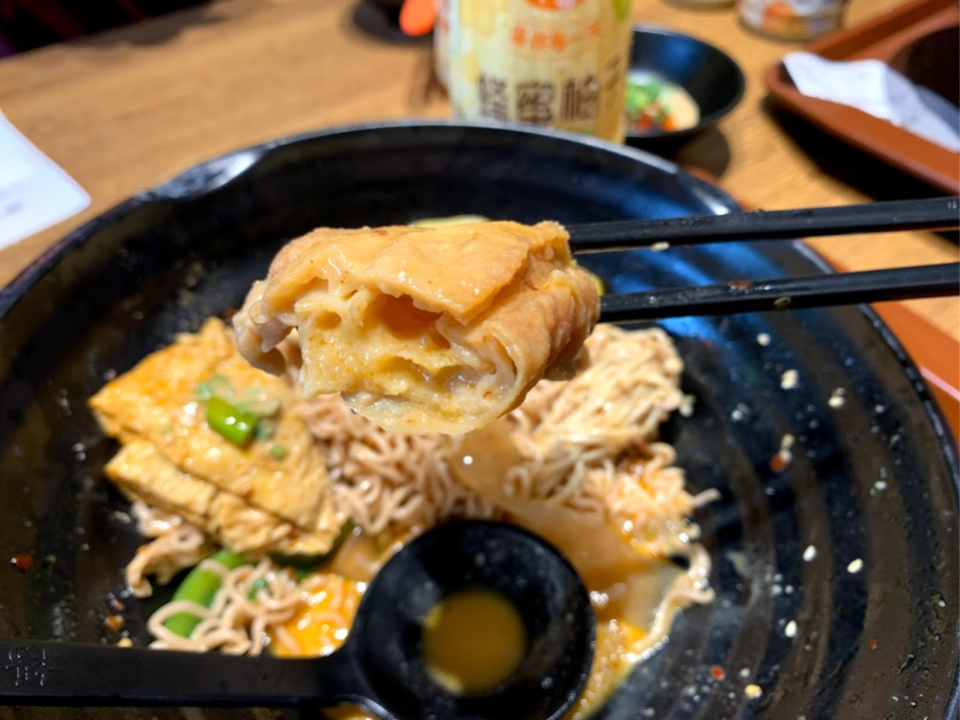 Oil sticks. Photo by Nigel Chua.
Oil sticks. Photo by Nigel Chua.
I'm not sure how youtiao ended up on the menu, but it provided a nice neutral-tasting base that soaked up the soup and sauces.
Might be nicer if it was just slightly crispy, however.
Tofu
YGF's tofu is made daily in a factory in Singapore under close supervision, and using YGF's original recipe.
The tofu was firm and did not fall apart in the soup, and tasted fresh, with no taste of preservatives.
YGF also offers xiang gan, a kind of extra-firm, almost-chewy tofu that is smoked. Though there isn't so much of a hint of smokiness, it is worth a try.
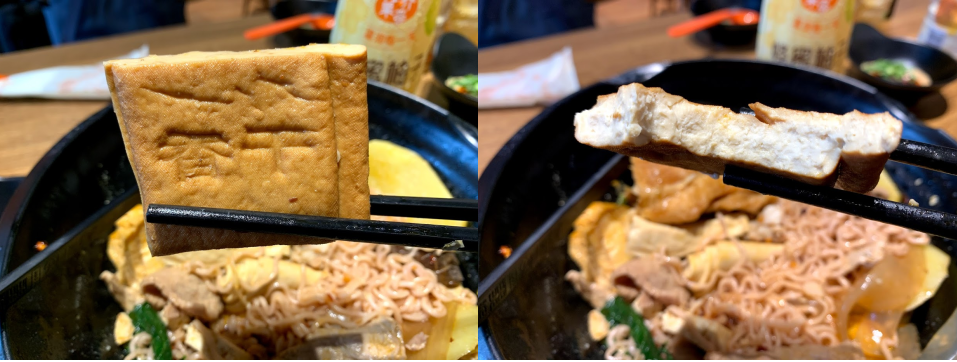 Smoked tofu. Photo by Nigel Chua.
Smoked tofu. Photo by Nigel Chua.
Noodles
If you haven't noticed by now, YGF's dishes are not served with rice.
And YGF is producing its own noodles, which will come in different colourful flavours such as sweet potato, spinach, and carrot.
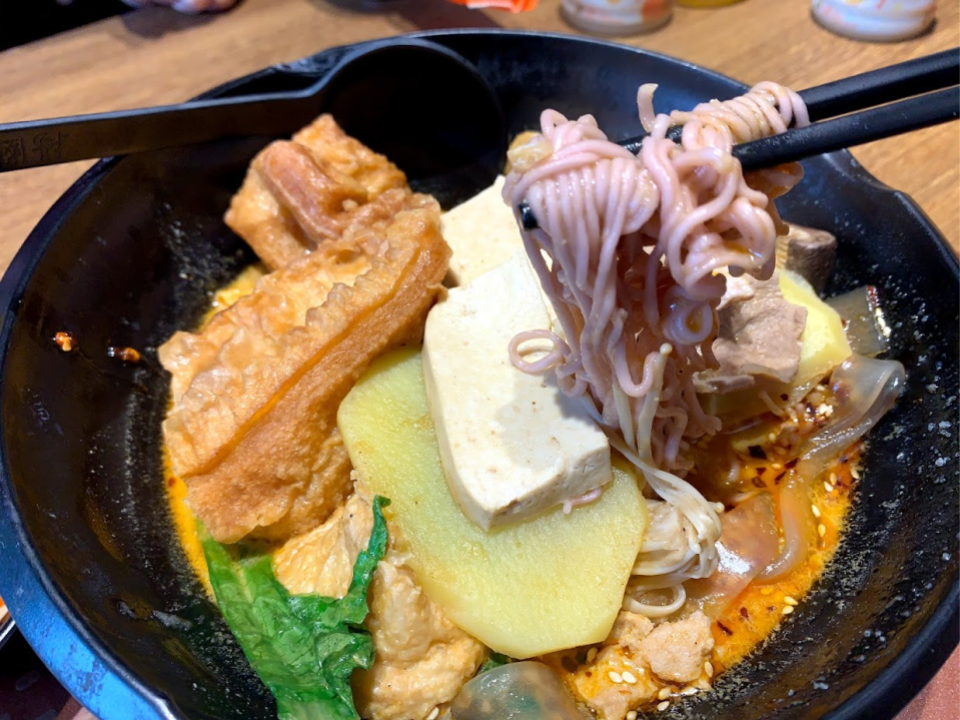 Sweet potato noodles. Photo by Nigel Chua.
Sweet potato noodles. Photo by Nigel Chua.
Pricing: S$2.88 per 100 grams
The cost of all the items is fixed at S$2.88 for 100 grams, which puts YGF on the pricy side.
As much as I tried to pick just a small quantity of each item to have more variety, my selections added up to 670g, which meant that the bill was S$20.65.
While a slightly larger bowl than this might just be able to feed two persons, the price is something you're going to want to watch out for — beware heavy items such as tomatoes and broccoli.
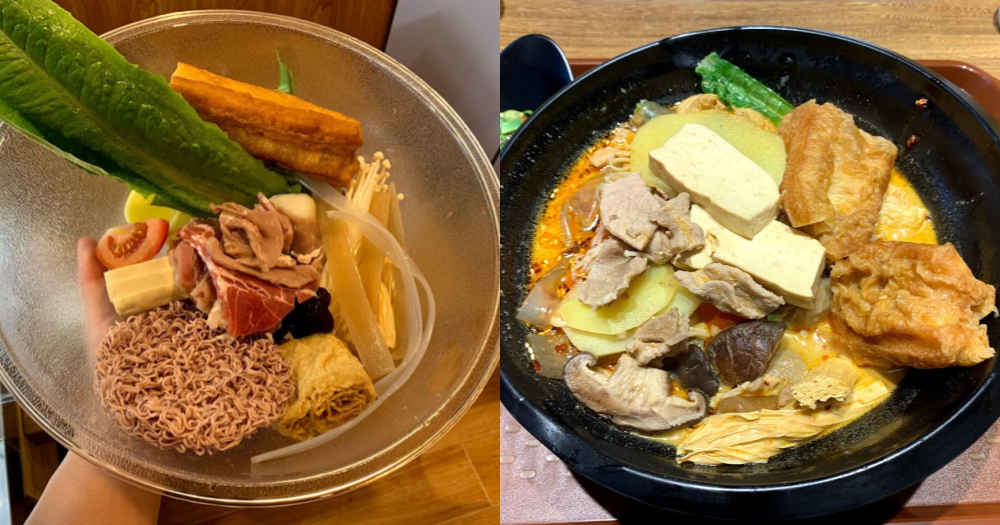 1.02kg of food (left), cooked and served in mala beef broth (right). Photo by Nigel Chua.
1.02kg of food (left), cooked and served in mala beef broth (right). Photo by Nigel Chua.
Opening on Nov. 27
Yang Guo Fu has two outlets in Singapore.
Its outlet at Bugis Village (233 Victoria Street Singapore 188026) opens on Nov. 27.
They also have another outlet at Singpost Centre (10 Eunos Road 8 #01-150 Singapore 408600), which is already open.
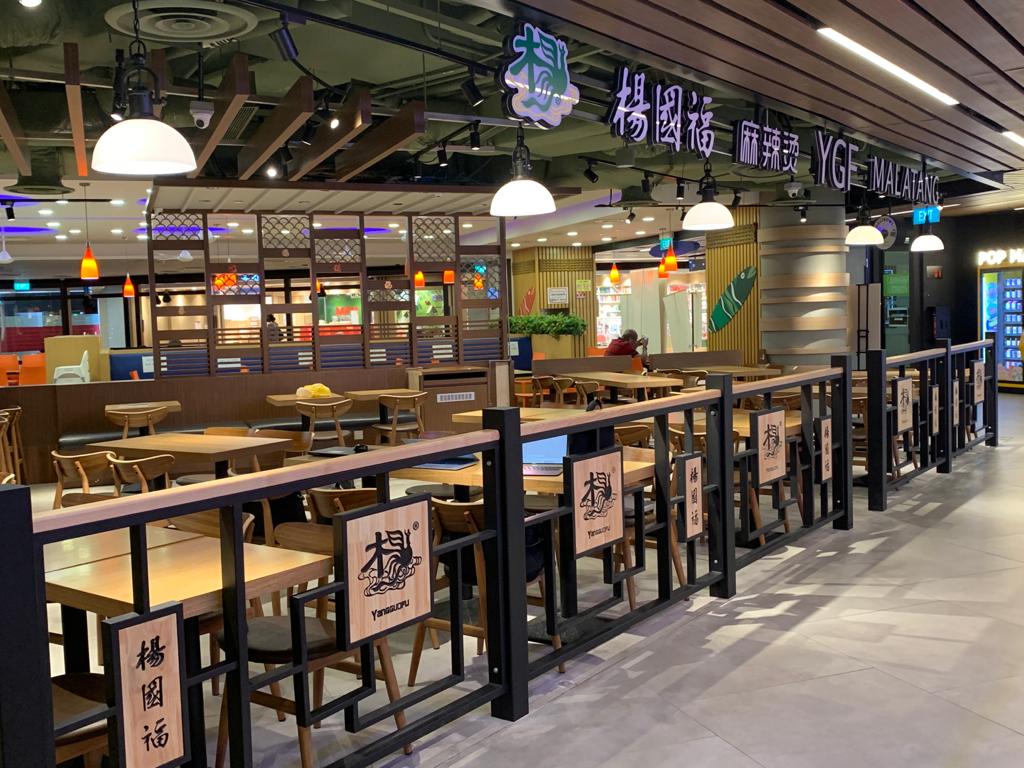 Yang Guo Fu's Singpost Centre outlet. Photo by Yang Guo Fu.
Yang Guo Fu's Singpost Centre outlet. Photo by Yang Guo Fu.
1-for-1 deal from Nov. 30
There is also a one-for-one deal running for two weeks from Nov. 30 - Dec. 14, 2020.
However, to redeem it, one must visit YGF at least twice.
Diners will have to visit either outlet between Nov. 30 and Dec. 14, and retain their original receipt.
Between Dec. 15 and Dec. 19, they can then use the receipt to enjoy a meal of the same value by presenting their receipt from the previous visit.
Totally unrelated but follow and listen to our podcast here
Top image by Nigel Chua
If you like what you read, follow us on Facebook, Instagram, Twitter and Telegram to get the latest updates.
